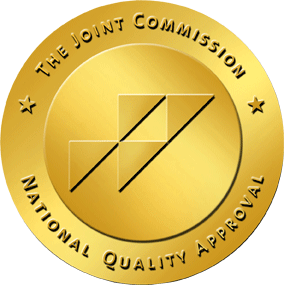Fentanyl Addiction Treatment
Fentanyl is a synthetic opioid that’s been at the forefront of the opioid epidemic the last several years. Used in medicine to treat pain in cancer patients or after surgical procedures, fentanyl has made its way onto the streets and is readily available and abused.
Illicit drug makers commonly add fentanyl to heroin. Despite the massive health risk of opioid painkillers and heroin, fentanyl has brought about an even graver opioid epidemic—one that revolves around synthetic opioids that are more powerful and deadly than heroin.
Fentanyl is 50 to 100 times stronger than morphine. It’s been tied to an increase in overdose deaths of over 16% from 2018 to 2019 and more than 36,000 synthetic drug overdoses in 2019. Fentanyl abuse is serious. If you or a loved one is using this drug, it’s important to seek fentanyl addiction treatment by professionals as soon as possible.

Fentanyl Medical Uses
Fentanyl is a synthetic opioid analgesic. This means it’s made in a lab and mimics the effects of natural opioids. Despite its medical uses, fentanyl is a Schedule II prescription drug. This is a designation the Drug Enforcement Administration (DEA) gives to drugs that have a high potential for abuse and addiction. Medical formulations of fentanyl are all listed as Schedule II drugs, with full acknowledgment of the drug’s high potential for abuse and dependence
Fentanyl was first approved over 50 years ago as a surgical anesthetic. It was later approved to treat severe pain in advanced cancer patients in the late 1990s.
Fentanyl is prescribed to treat:
- Severe pain
- Cancer pain
- Pain after surgery (post-operative pain)
- Chronic pain when tolerant to prescription opioids
Fentanyl is made legally in many different forms. These include very short-acting forms for acute pain and extended-release fentanyl patches to manage chronic pain for 12 hours or more. Some efforts have been made to prevent the abuse of prescribed fentanyl. But the illegal production of the drug has more than sustained the black market, overriding any tamper-proof efforts made by pharmaceutical companies.
Prescription fentanyl is available in these forms:
- Fentanyl injections
- Lazanda – nasal spray
- Abstral – sublingual (administered under the tongue)
- Fentora – effervescent buccal tablet (administered between the gum and the cheek)
- Subsys – sublingual spray (administered under the tongue)
- Duragesic – transdermal patches (placed on the skin)
- Actiq – oral lozenge (sometimes called “fentanyl lollipops”)
History of Fentanyl
Fentanyl was first produced in 1960 by Paul Janssen, a Belgian chemist working for the pharmaceutical company Janssen Pharmaceutical. In the early 1970s, fentanyl began to be used as an intravenous anesthetic in humans. It quickly became popular because of how potent and quick-acting it was for pain relief. Fentanyl’s use as an anesthetic was largely replaced by newer drugs in the 1980s and 1990s.-
How Fentanyl Became a Problem in the U.S.
Since fentanyl is completely synthetic (human-made), it can be produced cheaply and sold on the black market for less money than natural opioids like heroin. This is one of the many factors contributing to the opioid crisis in the country today. Because fentanyl is synthetic, it’s easy to make it illegally. This presents a greater danger for drug users who are unaware of how much fentanyl is in their heroin.
The black-market production of fentanyl is concerning because there’s no uniformity in the strength from one batch to another. This is clear in multiple reports of “killer batches” of heroin in isolated areas where a spike in overdose deaths occur in a short period. Besides an additive for heroin, dealers sell fentanyl by itself for substance abusers seeking the most intense high available.
When sold on the street, fentanyl has several names. Some common street names for fentanyl include:
- Murder 8
- Serial Killer
- China White
- Percopop
- Drop Dead
- Shine
- Apache
- Dance Fever
- TNT
- Jackpot
- Goodfella
Fentanyl sold on the streets may have some of the same street names as heroin, like China White. This increases the chances that a user will buy it and overdose on fentanyl, thinking they’re using heroin. They take the amount of heroin they normally would, which can be a deadly dose of the much stronger fentanyl.
The latest fentanyl statistics from the Centers for Disease Control and Prevention (CDC) speak for themselves:
- The number of people who died from synthetic opioids other than methadone, which includes illegal fentanyl, has increased by over 56% in just 2 years.
- Over the years there has been an increase in overdose deaths involving synthetic opioids such as fentanyl. In 2020 alone, 18 times more people died from these drugs than what was seen 5 years ago.
- More than 56,000 people died from synthetic opioid-related overdoses in 2020.
If you feel you or a loved one needs fentanyl addiction treatment, please call Vogue Recovery Center before it’s too late.
Effects of Fentanyl
The most dangerous effect of fentanyl abuse is respiratory depression and failure. These are the main symptoms of overdose. Fentanyl is much stronger than other prescription opioids like morphine. It comes in micrograms (µG), or one-millionth of a gram. In contrast, most medications—like other strong opioids—are measured in milligram amounts (one-thousandth of a gram). Although it’s known for effectiveness as a pain medication, a minuscule amount of fentanyl is enough to produce life-threatening effects if you don’t have some tolerance to opioids.
Like all opioids, the hallmark effect of fentanyl that makes it most dangerous is respiratory depression. In overdose situations your breathing and heart rate are so depressed that you could stop breathing entirely, causing coma or death.
Whether you’re taking fentanyl for medical or non-medical reasons, it can cause the same effects and risks. As an opioid and central nervous system (CNS) depressant, the respiratory depression it can cause is dangerous on its own. But fentanyl can be deadly when mixed with other CNS depressants, including:
- Other prescription opioid painkillers
- Benzodiazepines like Xanax
- Alcohol
- Heroin
A tiny amount of fentanyl can be the difference between feeling high and an overdose death, even in the most experienced heroin users.
Another major concern of fentanyl abuse is dependence and addiction. Fentanyl, like other opioids, can quickly lead to dependence when used regularly for an extended time—even just a few weeks.
Withdrawal symptoms can begin within a few hours of the last dosage of fentanyl, depending on the frequency and strength of fentanyl used.
Effects of clinical doses of fentanyl can include:
- Nausea
- Sweating
- Euphoria
- Confusion
- Drowsiness
- Dry mouth
- Depressed respiration
- Constricted pupils
- Constipation
- Vomiting
- Flushing
- Reduced heart rate
- Low blood pressure
- Weakness
- Stiff or rigid muscles
What Drugs Are Laced with Fentanyl?
Until recently, heroin was the drug most often cut with fentanyl. In fact, it became so common, many drug users just assumed fentanyl was in the heroin they bought. It was just a matter of how much. Now, fentanyl has found its way as a cutting agent to multiple street drugs. Fentanyl has been found in:
- Heroin
- Cocaine
- Methamphetamine
- Synthetic cannabinoids (Spice, K2)
- MDMA (also known as Molly or ecstasy)
How Easily Fentanyl Addiction Develops
The journey from being prescribed a painkiller to becoming addicted to it is often a gradual one. It usually starts with a legitimate need for the medication. For example, someone who has had surgery or who suffers from chronic pain may be prescribed fentanyl.
Over time the person may start to misuse the medication. This can happen for a number of reasons, like wanting to achieve a sense of euphoria or trying to self-medicate stress or anxiety. People who have mental health disorders or underlying trauma are at higher risk for abusing fentanyl. They may like the way fentanyl numbs their symptoms and difficult thoughts and feelings. This is a slippery slope into misusing and abusing the drug.
Misusing opioids can lead to tolerance, which means you need increasingly larger doses to achieve the same desired effect. Once tolerance develops, addiction is not far behind. Addiction is characterized by compulsive drug-seeking behavior and continued use despite negative consequences. At this point, your life may revolve around obtaining and using fentanyl, which can lead to financial problems, relationship difficulties, and legal trouble.
Signs of Fentanyl Abuse and Addiction
There’s a key sign of fentanyl abuse: You’re taking it in any other way than as prescribed by a doctor. Do not ignore this warning sign. Fentanyl abuse can be fatal. If you’re concerned that a loved one is abusing fentanyl, look for these warning signs:
- Taking fentanyl in higher doses or at different times than prescribed
- Going to multiple doctors to get more prescriptions
- Using alcohol or other drugs while on fentanyl
- Changes in personal hygiene or weight
- Excessive sleepiness or “nodding off” at odd times
- Withdrawal from family, friends, and activities
- Financial, legal, work, or relationship issues
- Finding hidden or empty prescription bottles
No one goes from being opioid-naive to abusing fentanyl without a few steps in between. Fentanyl is up to 100 times stronger than morphine, so you need to develop a very high tolerance to opioids to use fentanyl without serious risk of overdose and death. Even though these days heroin commonly contains fentanyl when sold on the streets, fentanyl alone still presents the same fatal overdose risks.
Some people with fentanyl addiction have been prescribed the drug at some time. The only way you can get a fentanyl prescription is through a doctor who has medical documentation of your chronic pain disorder and a documented history of increasingly more potent opioid painkillers. Many opiate addictions begin by simply taking more of the drug than indicated or combining it with other opioids to enhance the euphoric high it produces.
The longer you abuse fentanyl, the more your tolerance grows. You need more and more fentanyl to achieve the same effect. When you’re addicted to fentanyl, normal amounts of the drug aren’t sufficient to avoid withdrawal symptoms. Without fentanyl addiction treatment, you increase your risk of taking too many other opioids or depressant drugs and the potential for a fatal overdose.
Another serious concern of fentanyl abuse is that normal doses of the opioid-overdose-antidote naloxone are often insufficient to reverse the drug’s effects. In many cases of heroin or other opioids, naloxone can reverse the effects and immediately revive you. But medical workers have recently found that several doses of naloxone are necessary to reverse the overdose effects of fentanyl. The inability to reverse the deadly effects of a fentanyl overdose has led to thousands of deaths over the last several years of the opioid epidemic in the United States.
Behavioral Addiction Effects
Addiction to fentanyl is like addiction to any other drug. You feel a physical and psychological need to use the drug. You can lose all sense of ethics, morals, and honesty in the process of constantly seeking and using fentanyl.
Although addiction involves a physical dependence on fentanyl, it’s important to note that addiction and dependence are not the same. Dependence is a natural development from any substance used regularly for a prolonged time. Addiction is a series of behavioral patterns and disorders. One of the most dangerous of these is drug-seeking behavior.
The following are some common signs and effects of addiction to fentanyl:
- Growing tolerance and need for larger and more frequent amounts of fentanyl
- Inability to cut down or stop using fentanyl
- Experiencing withdrawal symptoms when not using fentanyl
- Abusing fentanyl with other CNS depressant drugs like alcohol, benzodiazepines, or other opioids
- Neglecting responsibilities and obligations to continue using fentanyl
Fentanyl Withdrawal Symptoms
Withdrawal from opioids like fentanyl is well known for painful and uncomfortable symptoms. For most people, fentanyl withdrawal is not life-threatening, but it can be grueling. Withdrawal symptoms from fentanyl may begin within a few hours of the last dose, reach their peak between two and three days, and begin to fade around the fifth day. The exact timetable for fentanyl withdrawal symptoms varies depending on individual circumstances and abuse patterns.
Withdrawal symptoms typically start with a runny nose and frequent yawning before more severe withdrawal symptoms set in. These can include:
- Headache
- Nausea
- Intense cravings
- Vomiting
- Clammy skin
- Agitation
- Anxiety
- Insomnia
- Diarrhea
- Sweating
- Abdominal pain
- Muscle pain and spasms
- High blood pressure
- High fever
- Increased heart rate
Fentanyl withdrawal isn’t life-threatening, but it’s severe and painful enough that it can cause users to justify anything to avoid it. The attempts to “get well” can include illegal and dangerous actions just to get fentanyl or any other opioid and avoid withdrawal. As part of fentanyl addiction treatment, you can undergo medically assisted detox to decrease withdrawal symptoms.
How Do You Treat Fentanyl Addiction?
Fentanyl addiction treatment begins with medical detox to eliminate drugs from your system. Unlike quitting cold turkey, a medical detox includes full-time medical staff to administer medications that can ease severe symptoms like:
- Nausea
- Insomnia
- Anxiety
- High blood pressure
- Diarrhea
Fentanyl detox can last for several days. Some symptoms linger for several weeks or months. These symptoms typically include intense cravings and anhedonia (an inability to feel pleasure).
Some people benefit from medication assisted treatment (MAT). These synthetic opioids can help ease cravings and withdrawal symptoms by attaching to opioid receptors in your brain.
Detox is not treatment. Eliminating drugs and alcohol from your system is just the first step in recovery. You must address the reasons behind substance abuse and learn healthy coping skills to stay sober when you’re confronted with triggers to use and life challenges.
An effective addiction treatment program provides:
- Coping skills to handle stress and pressure without turning to fentanyl or other substances
- Treatment for co-occurring disorders like mental illness
- Trauma therapies to address post-traumatic stress disorder (PTSD) or complex trauma
- Communication skills to relay needs and emotions in a productive manner
- Education to recognize triggers for relapse and learn how to avoid them or manage them
- Behavioral therapy to identify and address underlying issues that may have contributed to drug abuse
- Nutritional classes and therapies to establish healthier lifestyle habits
- Proven addiction treatment approaches like cognitive behavioral therapy (CBT), motivational interviewing, and individual and group therapy
- Comprehensive resources and connections for sober activities and hobbies to help prevent relapse
Recovery from fentanyl addiction requires more than just drug rehab. It’s a lifelong commitment. Before you leave inpatient or outpatient rehab, you’ll create an aftercare plan that supports sobriety. This may include:
- Counseling appointments
- Family therapy or couples’ therapy
- Psychiatry for medication management
- Medical appointments
- 12-step groups
- Work, school, or volunteering
- Sober living residences
Fentanyl Addiction Treatment at Vogue Recovery Center
Addiction and mental health treatment at Vogue Recovery Center is personalized to your individual needs, preferences, and life situation. Your treatment plan will reflect this. We offer inpatient treatment and outpatient treatment, including:
We also provide medical detox and sober living residences.
Treatment may include a combination of individual and group therapy, as well as holistic approaches like:
- Yoga
- Art therapy
- EMDR (eye movement desensitization and reprocessing)
- Music therapy
Our behavioral health treatment team is highly credentialed and experienced. Most importantly, they are compassionate and authentic people who truly care about your well-being and recovery.
Entering treatment for drug or alcohol addiction is difficult. We strive to make this experience as stress-free as possible and ensure you feel comfortable and welcomed from your first day at Vogue Recovery Center. Our substance abuse and mental health facilities are home-like and cozy, with plenty of amenities. This way you can focus on getting better.
Will Insurance Pay for Fentanyl Addiction Treatment?
Your insurance may cover all or a portion of addiction treatment, depending on your plan. Most insurances are required to cover behavioral health care in the same way as they cover medical care. Vogue is in-network with several insurance providers, and we work with most major insurance companies.
If you’re unclear about your drug rehab insurance coverage, call us for a free benefits check. We’ll work directly with your insurance provider to determine your coverage and any out-of-pocket costs.
Get Help Today
Synthetic opioids like fentanyl have claimed thousands of lives. Yours does not need to be one of them. Help is available, and recovery is possible. Addiction to this dangerous drug will only get worse without intervention and treatment. If you or someone you know is struggling with fentanyl abuse or addiction, call us now to speak with one of our experienced counselors about how we can help you reclaim your life and achieve lasting recovery.
References
- https://www.cdc.gov/opioids/basics/fentanyl.html
- https://www.sciencedirect.com/science/article/abs/pii/S0376871622001351?via%3Dihub
- https://nida.nih.gov/publications/drugfacts/fentanyl
- https://www.cdc.gov/stopoverdose/fentanyl/index.html#:~:text=It%20is%20commonly%
20mixed%20with,drugs%20are%20laced%20with%20fentanyl. - https://www.cdc.gov/opioids/basics/fentanyl.html
- https://nida.nih.gov/publications/drugfacts/synthetic-cannabinoids-k2spice
- https://www.dea.gov/resources/facts-about-fentanyl
- https://nida.nih.gov/publications/drugfacts/fentanyl
- https://www.cdc.gov/stopoverdose/fentanyl/index.html
- https://www.cdc.gov/drugoverdose/pdf/pbss/PBSS-Report-072017.pdf
- https://www.govinfo.gov/app/details/FR-2018-02-06/2018-02319
- https://www.uscc.gov/sites/default/files/Research/USCC%20Staff%20Report_Fentanyl-China%E2%80%99s%20Deadly%20Export%20to%20the%20United%20States020117.pdf

Medically Reviewed by Vaun Williams, Psy.D., LPC


